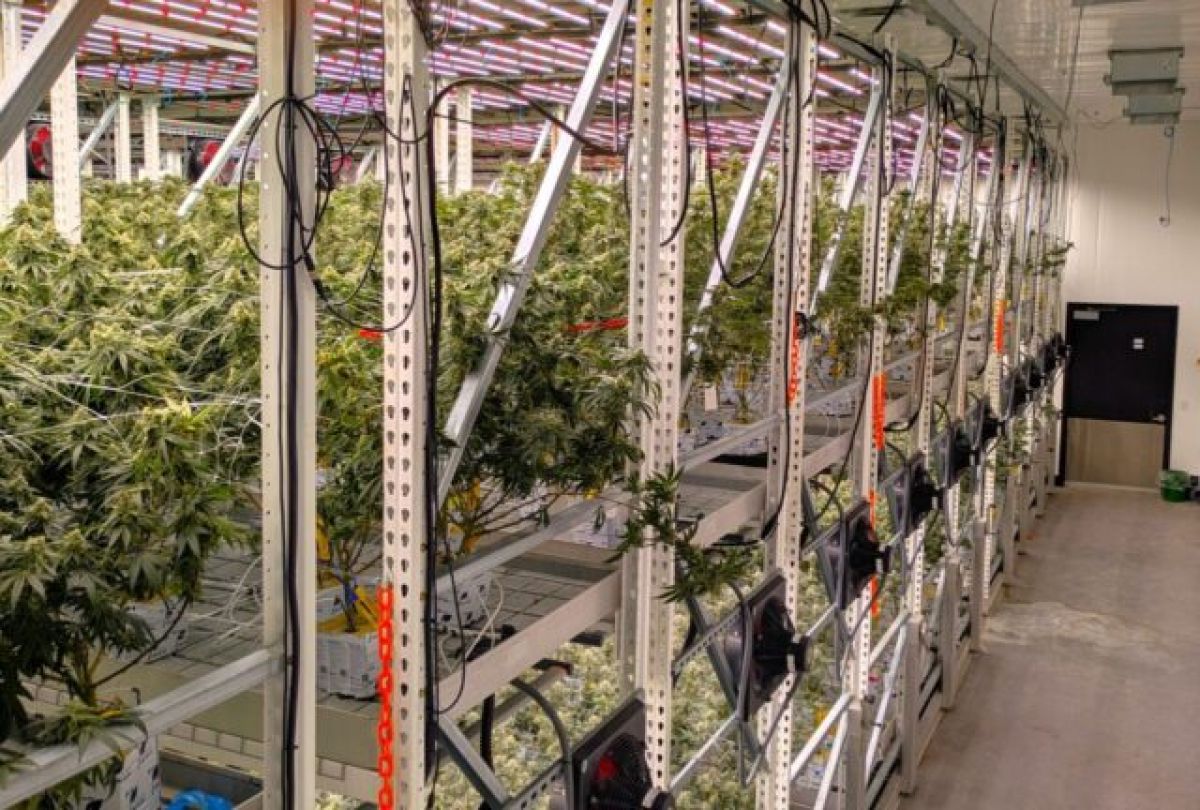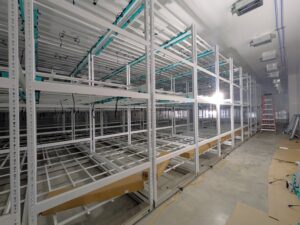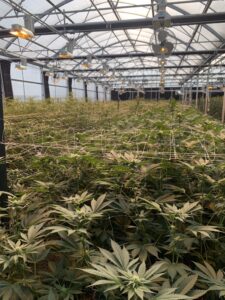Vertical Farming

Homing in on Vertical Farming Techniques

MOTHER PLANTS
HOW HIGH CAN YOU GO?
Air Circulation
In the design of multi-tier cultivation environments, effective air circulation is critical to maintaining uniform climate conditions. This involves integrating HVAC systems with strategic airflow management to ensure consistent temperature and humidity across all canopy levels.
Many cultivators transitioning from single-tier setups are accustomed to large ambient air volumes between the canopy and ceiling. However, consolidating equipment within a confined vertical space introduces airflow restrictions. Supply air from HVAC systems can be obstructed, and thermal loads from lighting and plant transpiration may accumulate, leading to microclimate variability.
As vertical distance between canopy and ceiling decreases, precise environmental control becomes essential. Implementing vertical air solutions enables targeted air distribution through mixing chambers affixed to rack exteriors. These chambers, equipped with inline fans, draw in conditioned and dehumidified air and deliver it directly to each tier. This approach mitigates stratification, enhances thermal uniformity, and eliminates undesirable microclimates within the canopy zone.

Environmental Control Needs
No matter how you size your HVAC system, it’s essential for growers to understand how to strategically deliver air throughout a vertical grow space.
To remove moisture from the air, you need to cool it quickly to trigger condensation, then reintroduce it to the room using a reheat element.
While standard HVAC systems in grow operations typically exchange air only a few times per hour, vertical air solutions are designed to achieve 20–30 full air exchanges per hour. This enhanced airflow—through well-placed supply and return systems—can significantly impact plant performance and help reduce the risk of disease.
Genetics & Key Traits
Vertical air techniques have expanded the possibilities for cultivar selection in vertical farming environments.
One’s success in vertical cultivation stems from a deep understanding of plant genetics and knowing the growth characteristics of each cultivar before introducing it into the system.
Early vertical setups favored Indica-dominant strains due to their compact growth and minimal stretch, which suited the limited vertical space. However, with advanced airflow management and environmental control provided by implementing vertical air techniques, growers can confidently cultivate a broader genetic spectrum—including Sativa-dominant varieties that exhibit significant vertical growth—without compromising canopy uniformity or light distribution.